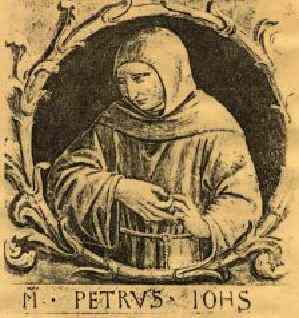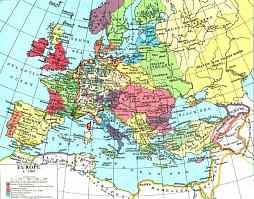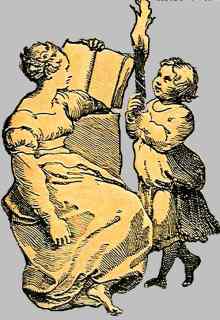
| The Journal for MultiMediaHistory Volume 1 Number 1 ~ Fall 1998 |
Internet Medieval Sourcebook,
http://www.fordham.edu/halsall/sbook.html
Paul Halsall, editor and originator (Fordham University), 1996.
 |
The Internet Medieval Sourcebook is thoughtfully organized into three major parts: "Selected Sources" (excerpted texts for teaching purposes that are usually three or more pages long �allowing students to see a larger context, and to escape from being spoon-fed�); "Full Text Sources" (full texts of Medieval sources arranged according to type); and "Saints� Lives" (devoted to Ancient, Medieval and Byzantine hagiographical sources). Each part has its own index page with a number of supplementary documents attached. The index pages are large but, since graphics are kept to a minimum, they load quickly and allow the user to access the primary information within two to three �clicks.� The index pages are also carefully designed with bookmarks to the numerous sections and subsections. For example, the "Selected Sources" index includes well-considered sections on "Studying History," "The End of the Classical World," "Byzantium," "Islam," "The Formation of Latin Christendom," "The Flowering of Latin Christendom," "Medieval Life and Thought," "The Late Middle Ages," and "Transformations." One of the great strengths of this Sourcebook is the equal coverage given to Byzantine and Islamic sources as well as the inclusion of texts addressing women's history, the history of sexuality, lay and popular religion, and the history of marginalized groups such as the Jews.
 |
the Internet Medieval Sourcebook site. |
Like Loengard�s students, this art historian also browsed among the wealth of material within the Internet Medieval Sourcebook, and made one especially interesting discovery on the "Selected Sources" page under the headings "The Flowering of Latin Christendom" and "The Rise of France": a new, copy-permitted translation of the Liber de Rebus Administratione Sua Gestis of Suger, Abbot of St. Denis (http://www.fordham.edu/halsall/source/sugar.html), written between 1144-1148. This crucial text, familiar to every student of Medieval art and civilization, is concerned with the Abbey Church of St.-Denis in Paris, the birthplace of the Gothic style envisioned by Abbot Suger, who dreamed of an architecture which by means of unified space and dramatic colored light would recreate on earth the celestial light of heaven. The text of the De Administratione has been available to students and scholars primarily through the English translation (1946; revised 1979) by the great art historian Erwin Panofsky who examined the original manuscripts. It is otherwise known in Latin editions of the seventeenth, eighteenth, and nineteenth centuries. The new translation is David Burr's of the History Department at Virginia Polytechnic Institute. According to his Web site (http://dburr.hist.vt.edu/), he made this translation for the sake of his classes and not apparently with a view to print publication. He provides his translation with a brief introduction on the life and significance of Abbot Suger, useful for teaching purposes. Unfortunately, there is no information on when or how the translation was produced other than the statement that "all of the work that has survived is reproduced here." This statement, however, is incorrect; and the translation reproduces only those sections that Panofsky chose to publish in his book, i.e. the "Introduction" (chapter 1, first half), and the "Second Part," beginning with chapter XXIV. It seems likely, therefore, that the translation was made from the Latin text reproduced in Panofsky�s book (although no mention is made of this fact) rather than from the original manuscripts. Despite this lack of information (which surely would have been included in a print publication), the translation itself is quite wonderful. It eliminates the archaic English, and at times, the awkward word order, that is characteristic of Panofsky�s translation, resulting in a vigorous and faithful text that should be infinitely more accessible to students of the 1990s. It is to be hoped that Burr (and Halsall) will eventually provide translations of the rest of De Administratione as well as Suger�s Libellus Alter de Consecratione Ecclesiae Sancti Dionysii and the Ordinatio of 1140/1141 which are currently not to be found within the Internet Medieval Sourcebook.
 |
Sourcebook site. |
Halsall has provided the Internet Medieval Sourcebook with a good and flexible search engine (HotBot) that allows the user to choose the search range and key words (Boolean operators work). To this, Halsall has added a "user-friendly" explanation of how the search engine works, demonstrating an awareness of his wide audience that includes both students and scholars with varied computer skills. This sensitivity is evident in the numerous explanations that are included throughout the site and in the occasional gentle reminders to undergraduate students that they should visit the library and not rely on Internet sources alone for their papers. Halsall also provides students with a useful link to "A Brief Citation Guide for Internet Sources in History and the Humanities" by Melvin E. Page (http://www.fordham.edu/halsall/cite.html).
Because of its comprehensive coverage and careful design, which makes it very easy to use, the Internet Medieval Sourcebook must be counted among the very best Web sites available for teachers, scholars, students, and enthusiasts of Medieval history.
Ann M. Nicgorski
Willamette University
Contents: JMMH, Volume 1 Number 1 ~ Fall 1998